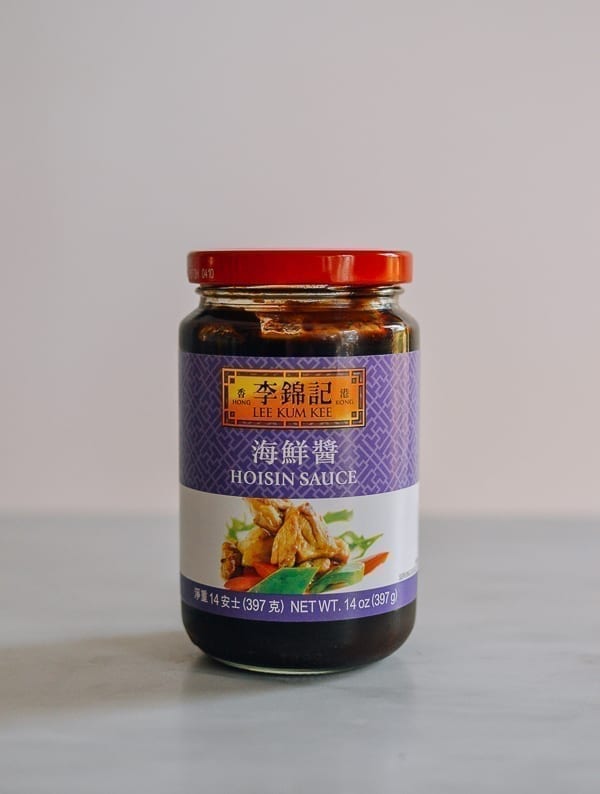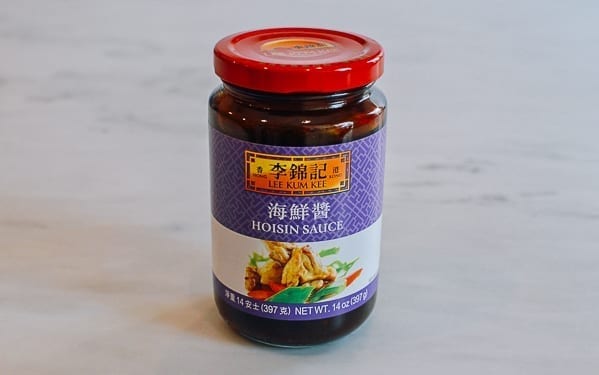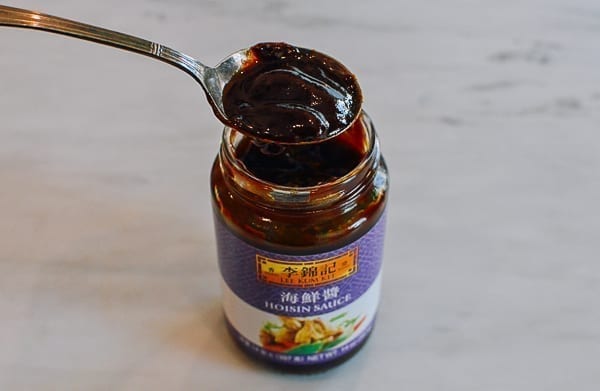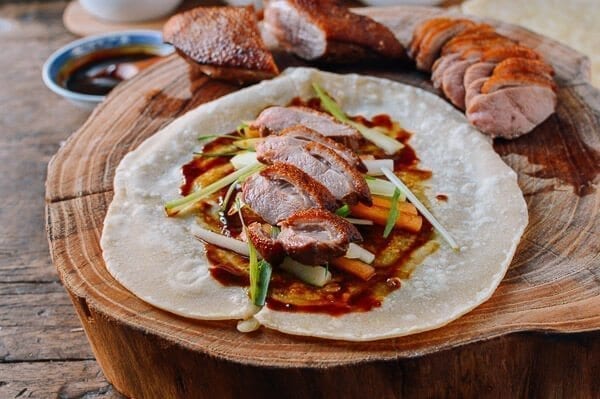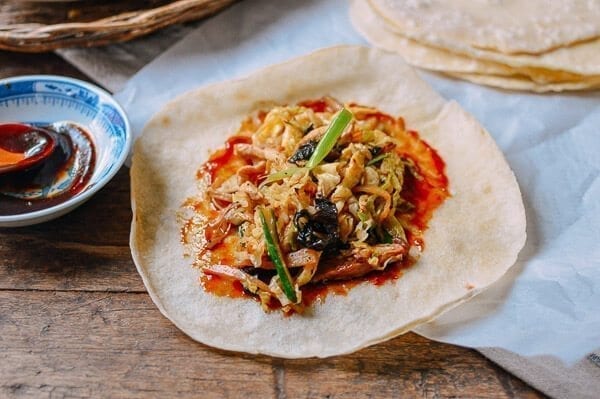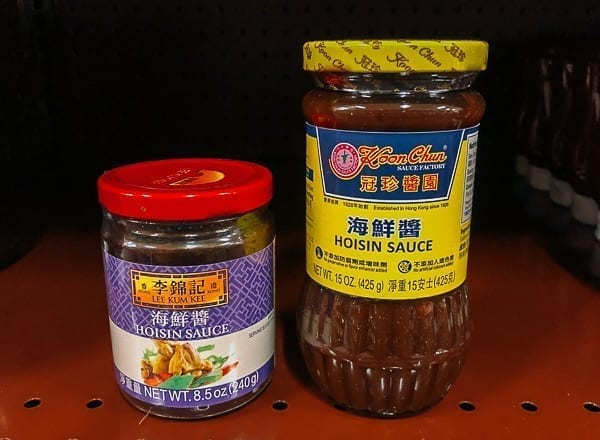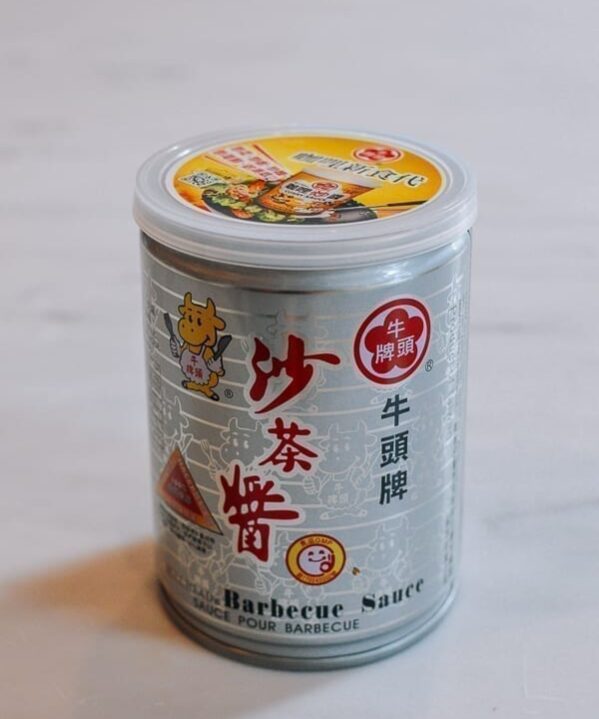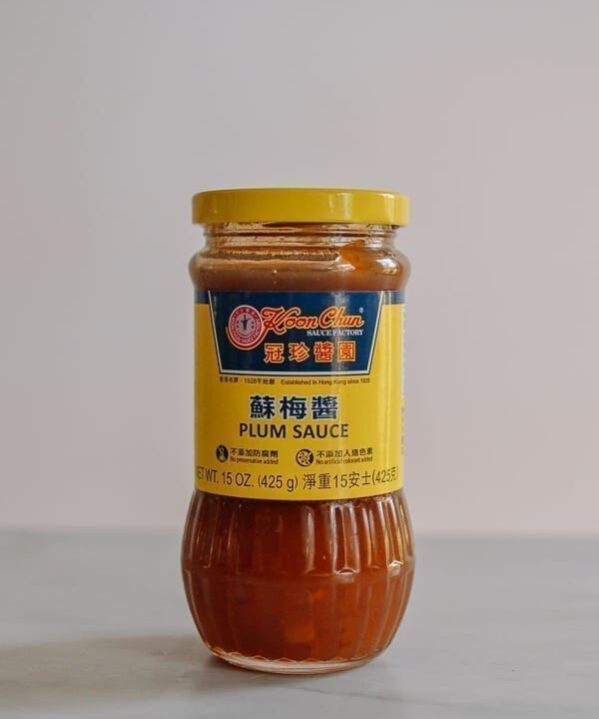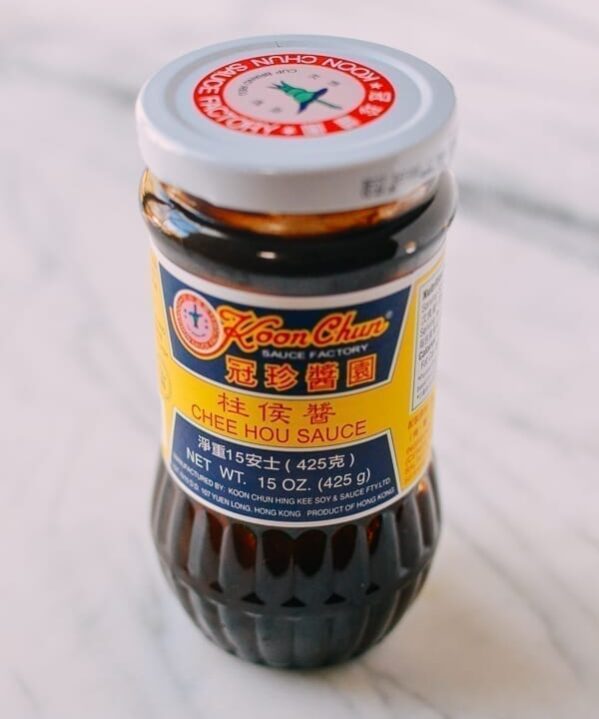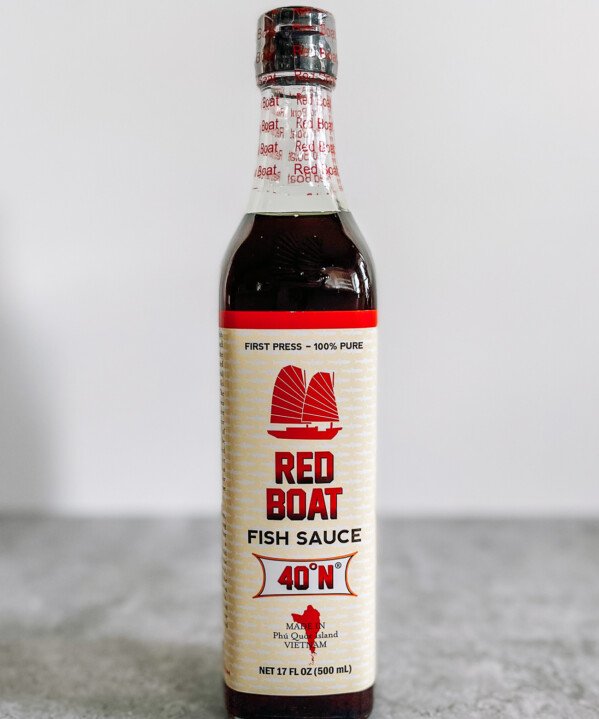Hoisin sauce, though not included in our list of 10 Essential Chinese Pantry Ingredients, is a well-known Chinese condiment. It can sometimes be confused with sweet bean sauce (tián miàn jiàng, 甜面酱) and sweet bean paste (dòubàn jiàng, 豆瓣酱), but it has its own distinct flavor and uses.
Let’s take a closer look at what it is, how it’s used, where to buy it, and what to substitute for it if you can’t find it.
What Is Hoisin Sauce?
Hoisin Sauce (hǎixiān jiàng, 海鲜酱) is a thick, dark condiment with a sweet, salty flavor. It is made with fermented soybean paste, as well as additional seasonings like garlic, chilies, and sesame.
The name hǎixiān jiàng literally translates to “seafood sauce,” but hoisin sauce does not contain seafood, nor is it usually used in seafood dishes. How it got its name is still unclear to us!
Some brands and recipes use the terms hoisin sauce and sweet bean sauce (tián miàn jiàng, 甜面酱) interchangeably. However, while hoisin is made primarily from soybeans, sweet bean sauce is actually primarily made from fermented wheat flour!
It’s also possible to confuse hoisin sauce with sweet bean paste, or dòubàn jiàng (豆瓣酱), but sweet bean paste contains only fermented soy beans, wheat flour, and salt, while hoisin sauce generally also contains sesame, chili, garlic, and other spices.
How Is It Used?
Hoisin Sauce is used commonly in Cantonese-style cooking. It’s used in marinades and sauces for BBQ meats like Chinese BBQ Spareribs, BBQ Pork (Char Siu), or even our interpretation of a Thanksgiving Turkey roasted in a Cantonese-style.
It is used in Beijing as a condiment for Peking Duck, a dish well-known around the world.
It can also be applied to the Chinese American favorite, Moo Shu Chicken, along with mandarin pancakes. For vegetarians, it can also be used with our Vegetable Moo Shu.
Hoisin sauce is also used in Vietnamese cuisine, often served with Pho noodle soups.
Buying & Storing
Hoisin sauce is one of those ingredients that has become more readily available in regular supermarkets––you’ll usually find it in the aisle with Asian/Kosher/ethnic ingredients. Try finding one where the first ingredient isn’t sugar.
It can also be found online.
Refrigerate after opening, and make sure the jar is well sealed. It can last for up to 18 months in the refrigerator. Just make sure to always use a clean utensil when getting it out of the jar in order to prevent contamination.
Substitutions for Hoisin Sauce
While Hoisin sauce is readily available in many supermarkets these days, and probably the easiest-to-find soybean-based paste or sauce, you might not have it on hand.
If you do happen to have sweet bean paste or sweet bean sauce, you can sub either in and thin them out with a little bit of hot water if too thick. You can also substitute Chee Hou Sauce, which has the same basic ingredients, in addition to other spices and seasonings.
We know it seems crazy to focus so much on their differences only to say that they can be subbed in for each other. However, it’s good to be aware of what makes each ingredient distinct, while also being aware that they all do offer umami and a little bit of sweetness!
Our Favorite Dishes That Use This Ingredient:
- Honey Hoisin Pan-Fried Noodles
- Chinese BBQ Spareribs
- Chinese BBQ Pork (Char Siu)
- Cantonese Turkey
- Moo Shu Chicken
- Vegetable Moo Shu
If you have further questions about this ingredient, let us know in the comments––we try to answer every single one.
